
Why manuscripts?
Authors of the New Testament penned their words long before the advent of the printing press. As they circulated, scribes copied the wording from these documents in order to share the letters, historical accounts, and prophecies. The original manuscripts of the authors no longer exist in a physical state, having disintegrated with time and use. Thousands of extant handwritten copies, however, contain the text which scribes transmitted in their work, some reaching back as early as the second century AD.
Beyond textual studies, art historians, papyrologists, codicologists, paleographers, and archivists have significant interest in New Testament manuscripts. These artifacts attest to the history of writing, art, and book making. Some researchers endeavor to trace the transmission history and evidence of how people interacted with the documents. Illustrations, commentary, marginal notes, and even the location of wax dripped from ancient candles reveal the attention to and passion with which people of early centuries approached the pages of codices.
Descriptions for different features and components of the manuscripts in CSNTM’s collection are below. For more on New Testament textual criticism, see the Resources (link), Books (link), and Videos (link).
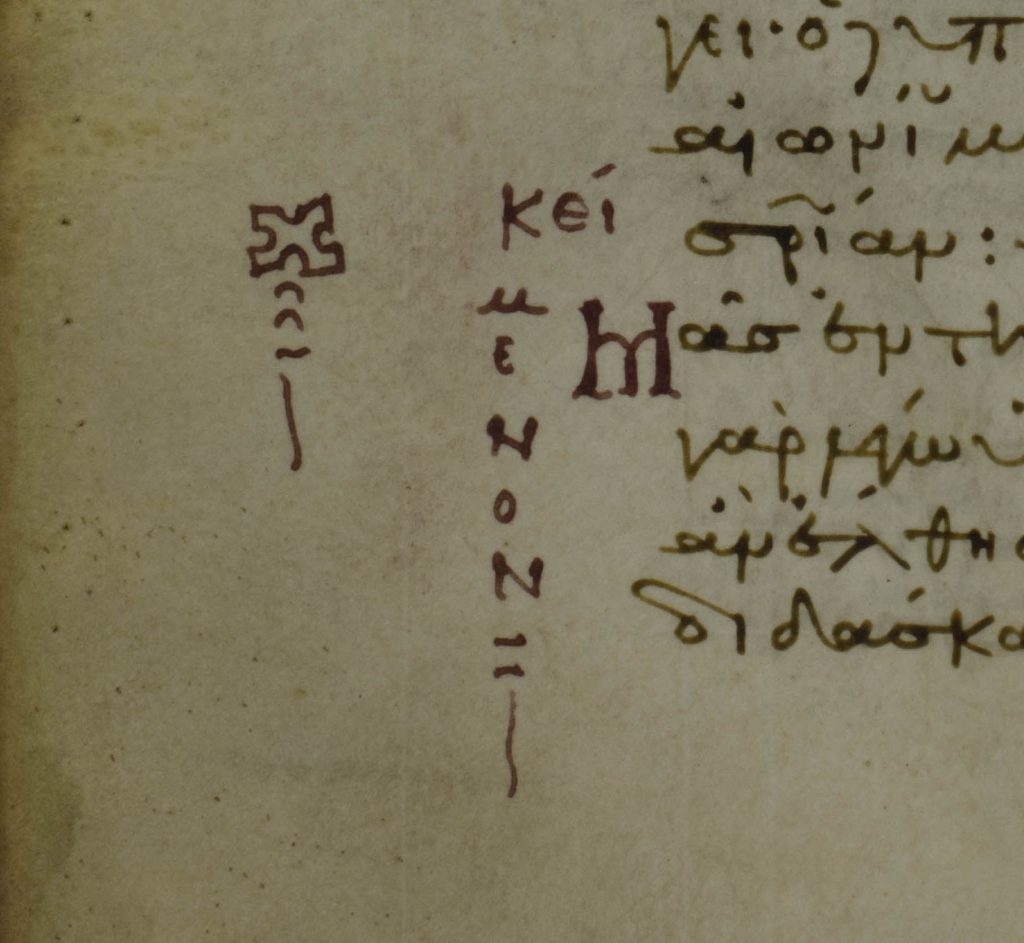
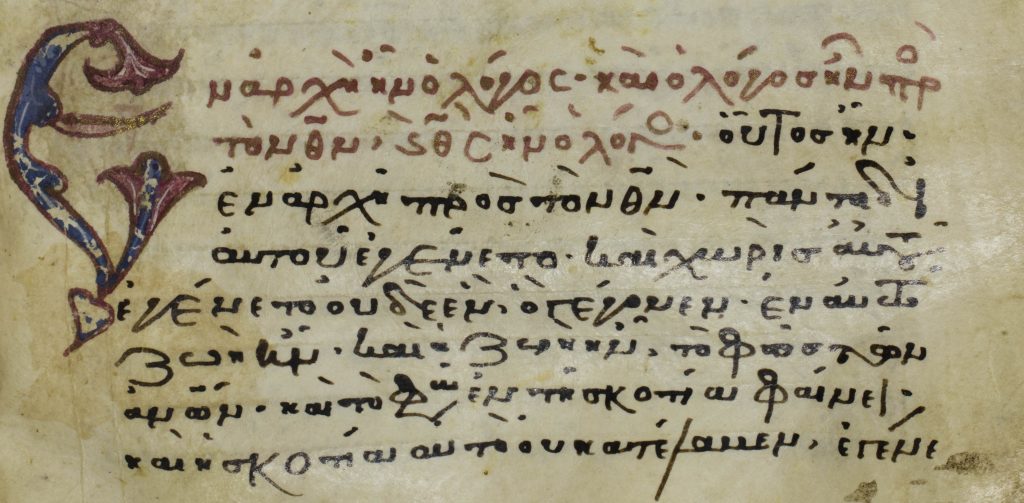

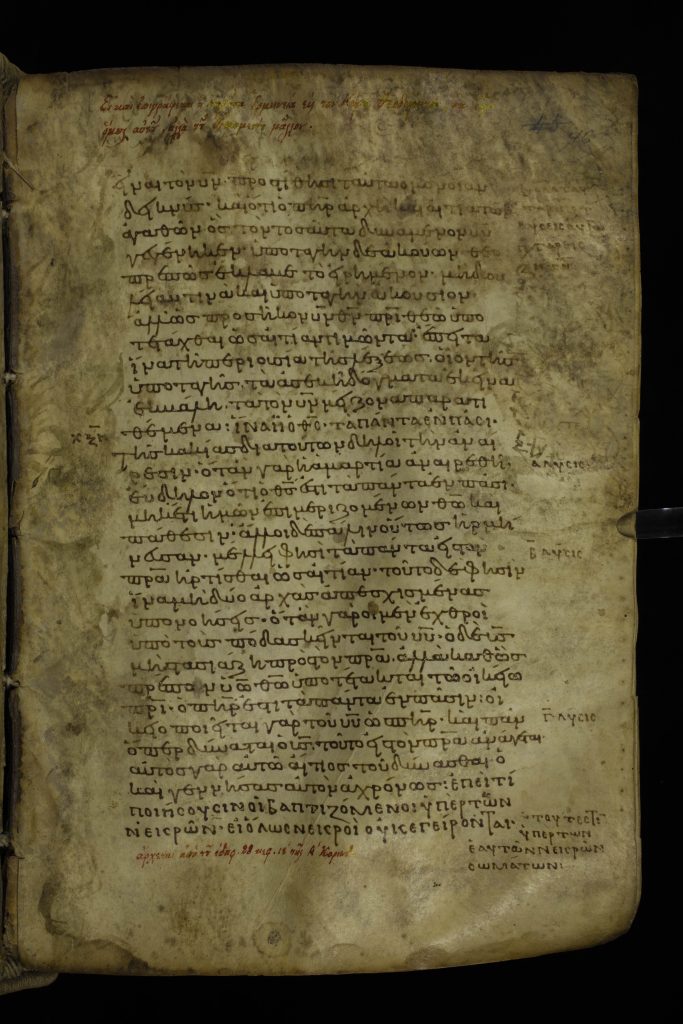
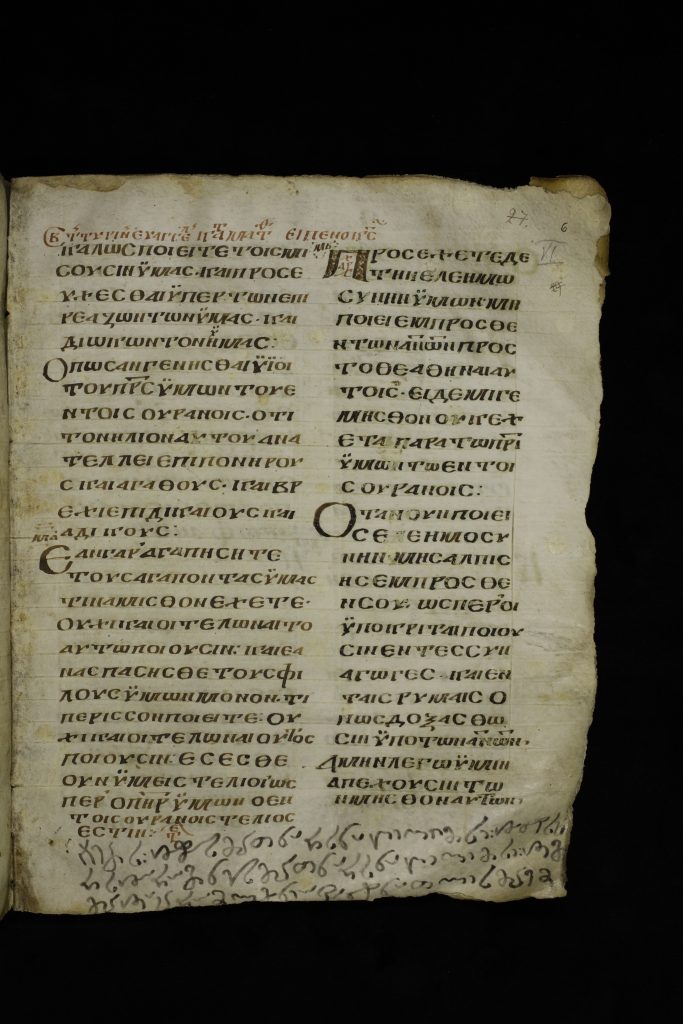
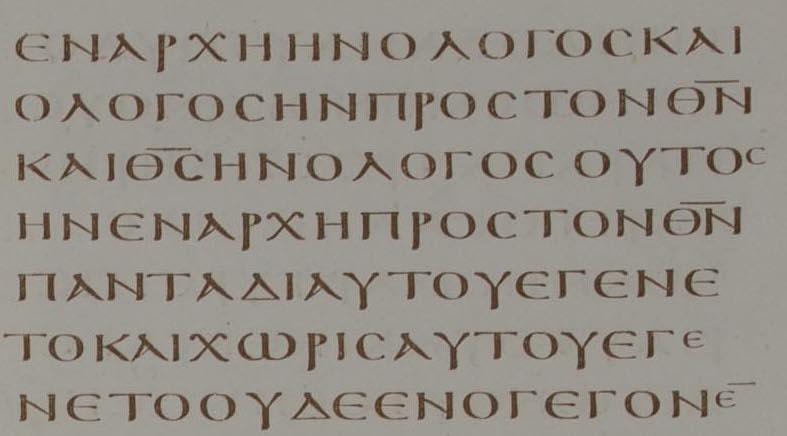
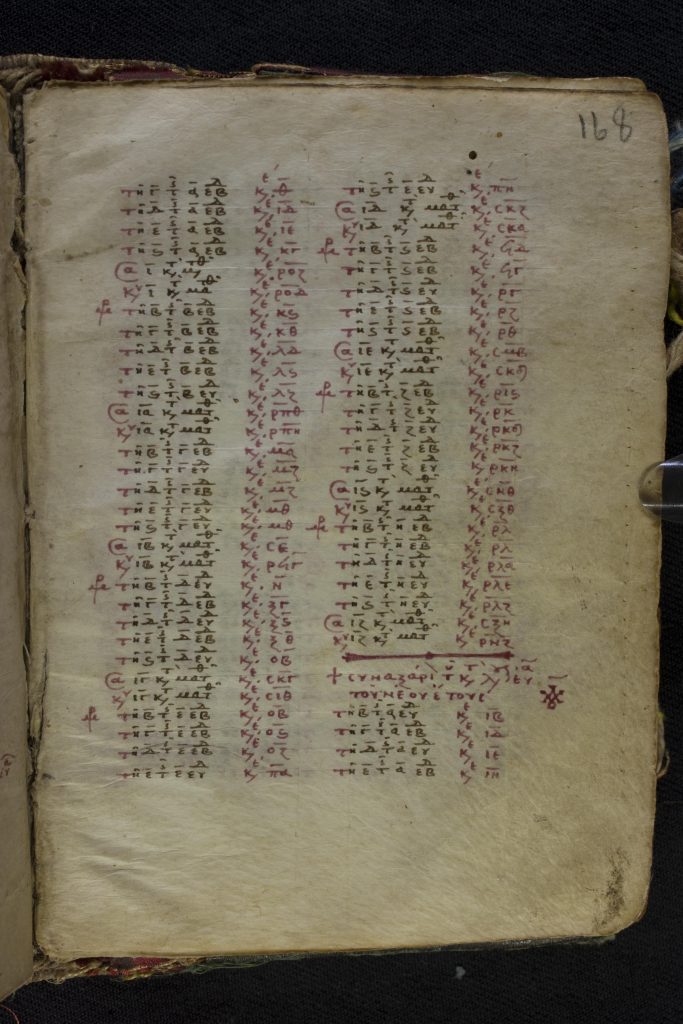
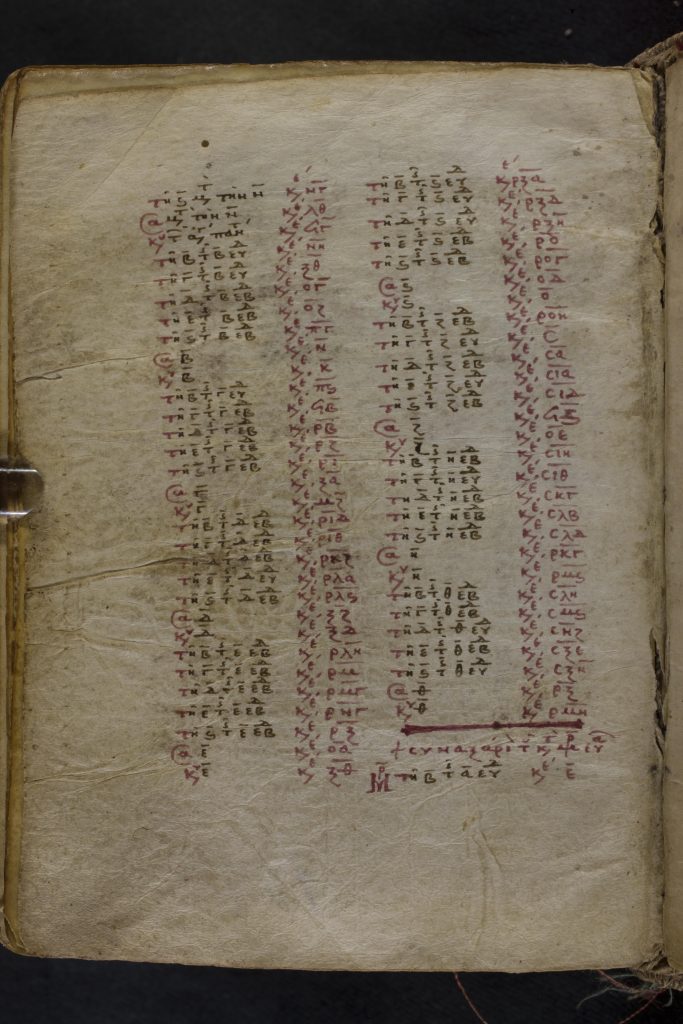


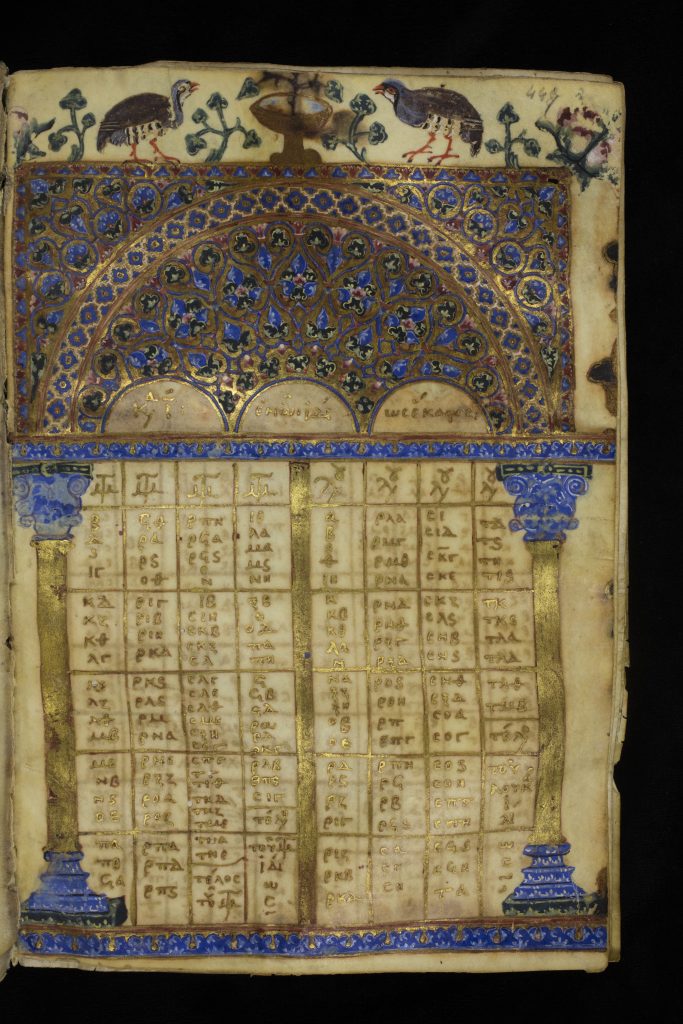
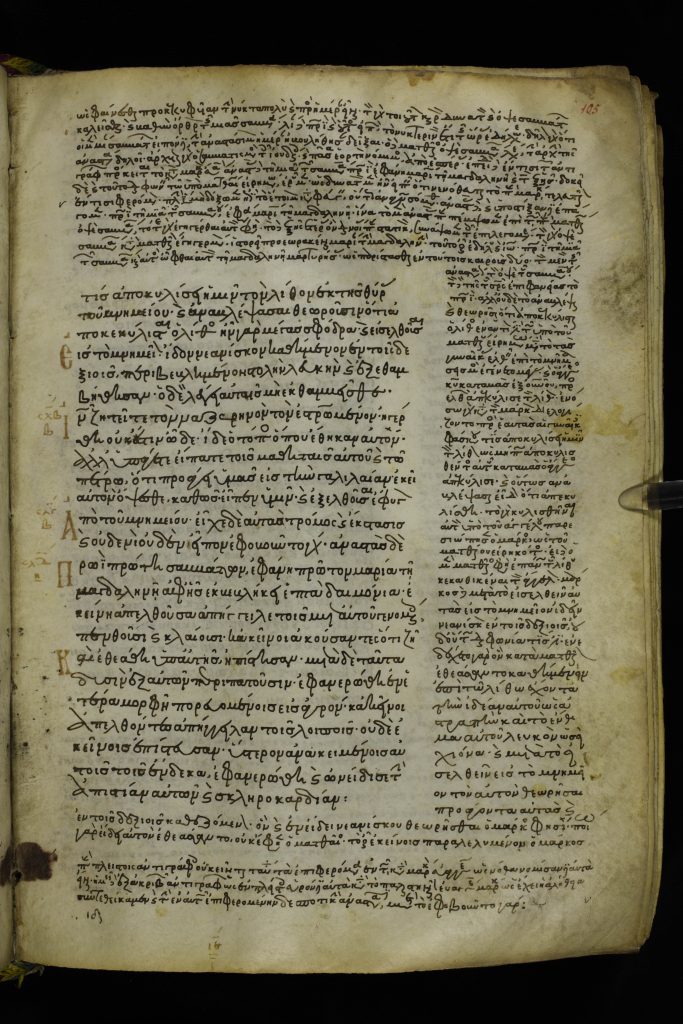
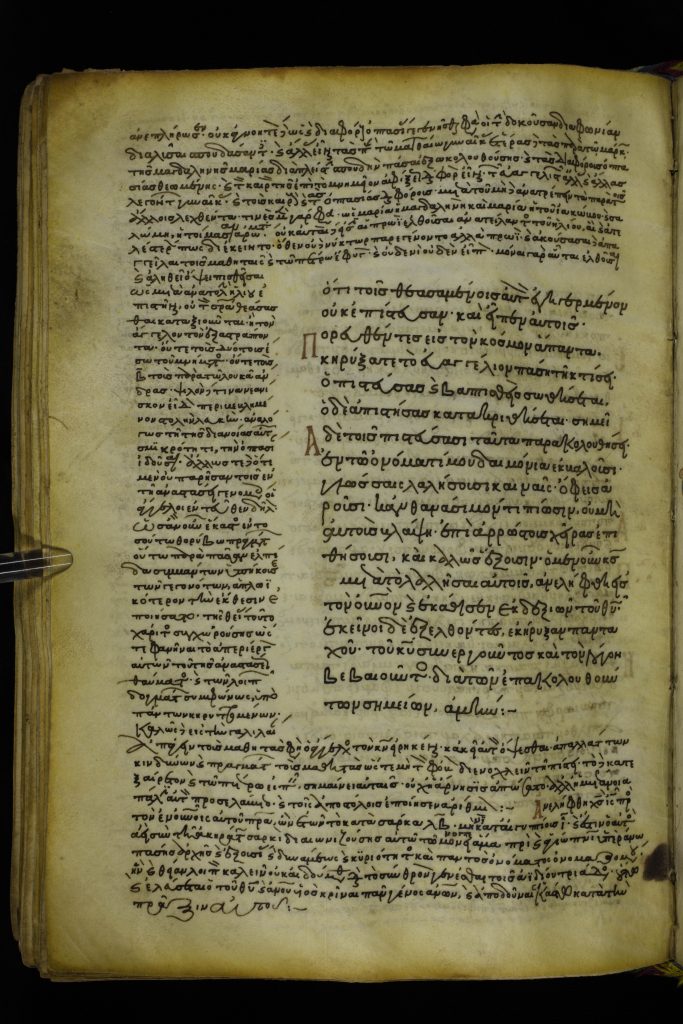

GA
The GA numbers take different forms based on the materials and handwriting of each manuscript. Those forms also designate the grouping system:
GA P1
The P designation indicates papyrus documents. The earliest Greek New Testament manuscripts were written on papyrus.
GA 1
GA numbers, which do not begin with a zero, indicate documents written in minuscule handwriting, which was used by later scribes. Minuscule handwriting changed over time as scribes used it. Every form, though, is indicated by a number 1–2900+ following “GA.”
GA 01
GA numbers that begin with a zero indicate majuscule manuscripts. The earliest scribes used majuscule handwriting. Since the papyrus manuscripts show a majuscule hand, those designated as majuscule on the K-Liste include majuscules written on different material, parchment, used by later users of this kind of handwriting. Majuscules GA 01–045 also have an associated sigla, a capital letter, and a descriptive name.
GA Lect 1
The abbreviation “lect” indicates lectionary books. These New Testament documents contain readings according to the liturgical calendar. Some Greek New Testaments include a lectionary guide, which indicates which passage gatherings should read on certain dates. Lectionary books, however, are arranged according to the calendar.
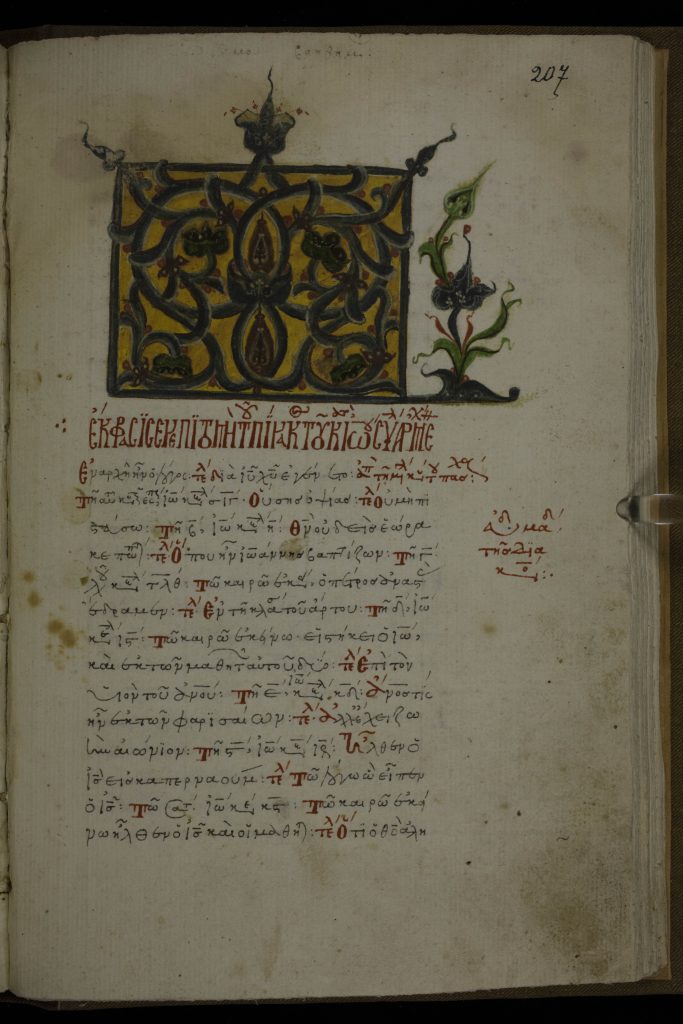
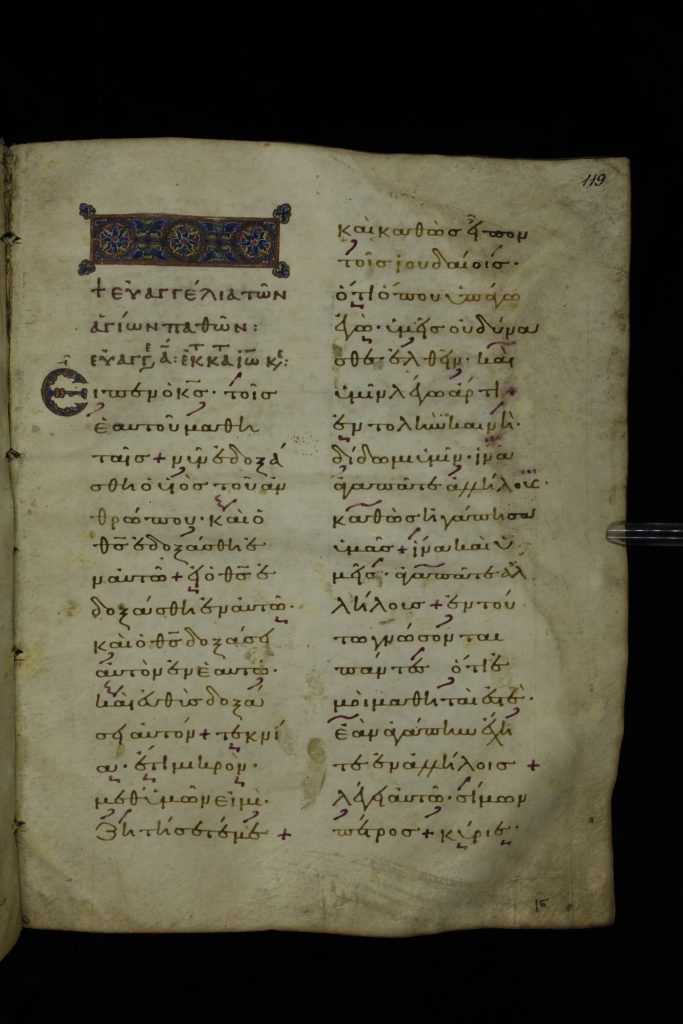




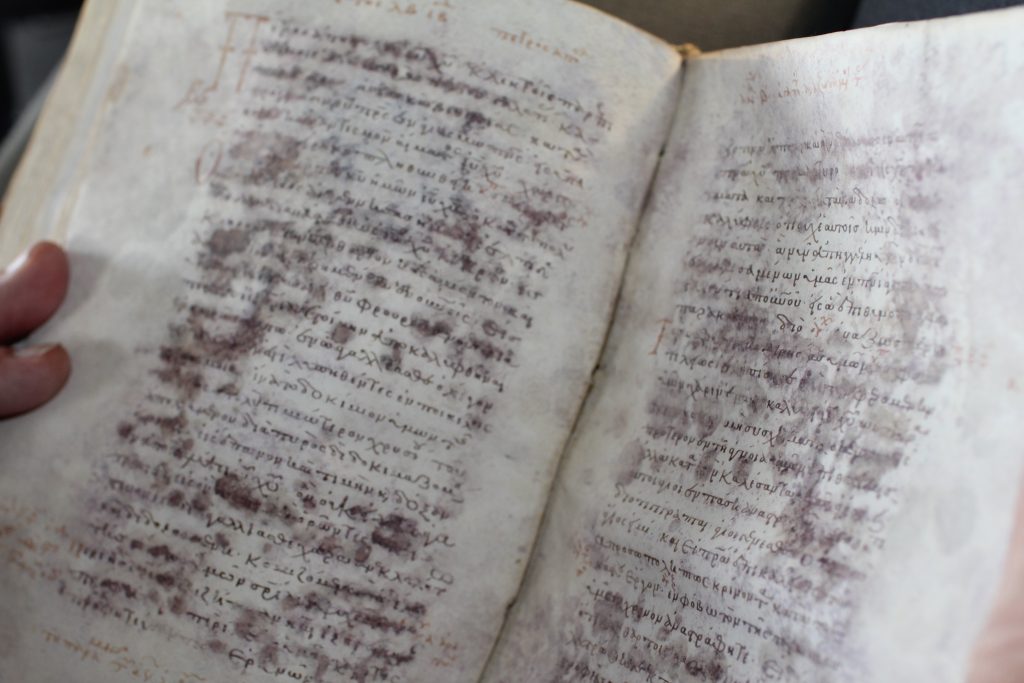
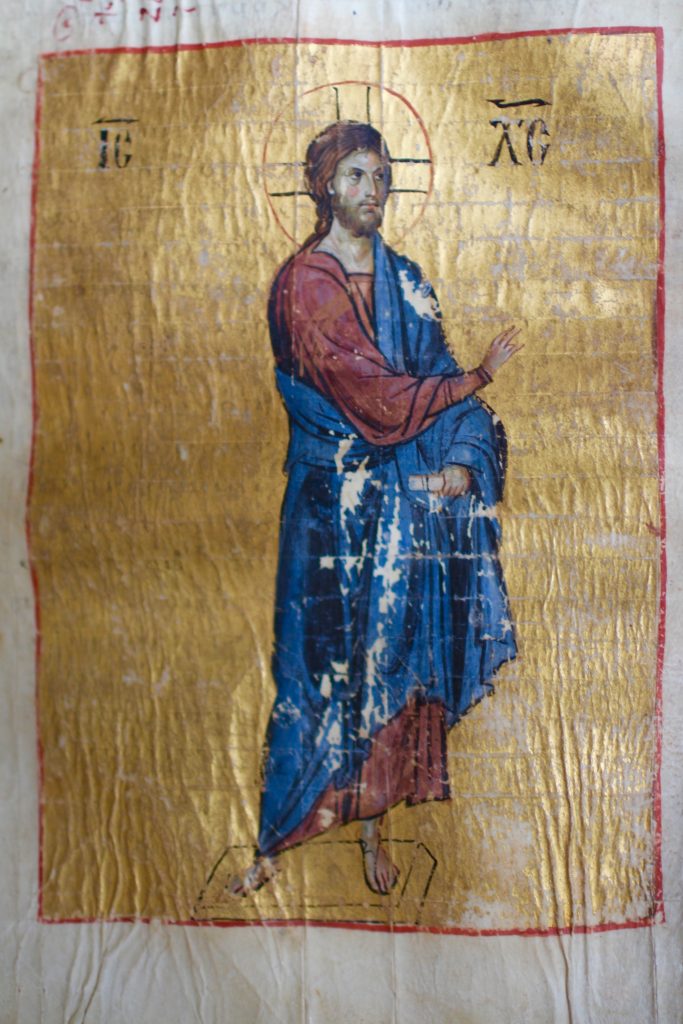
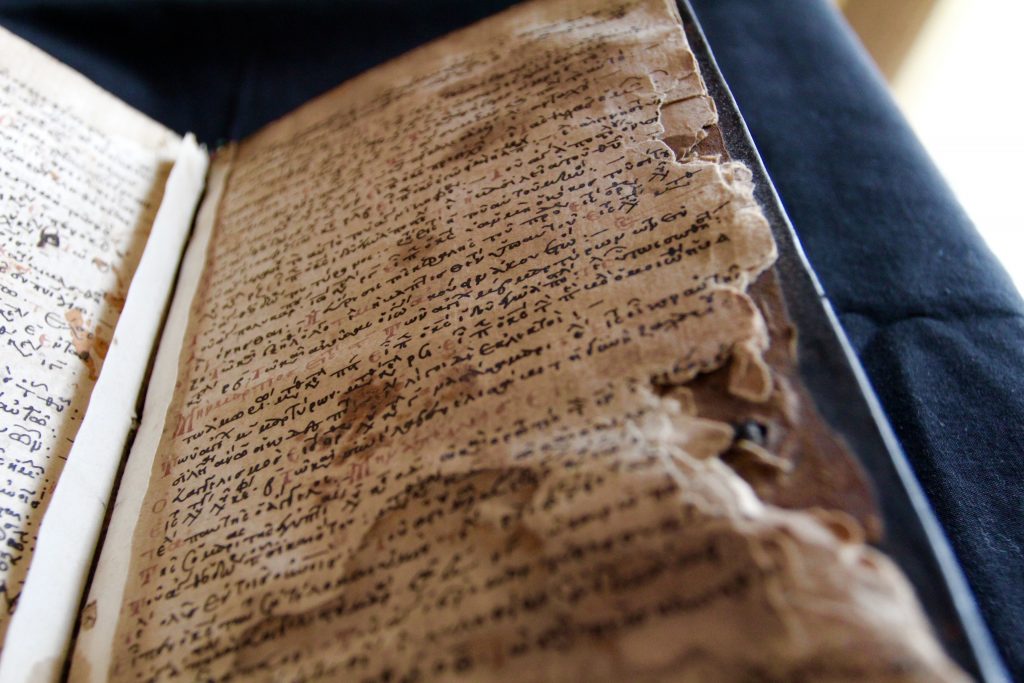

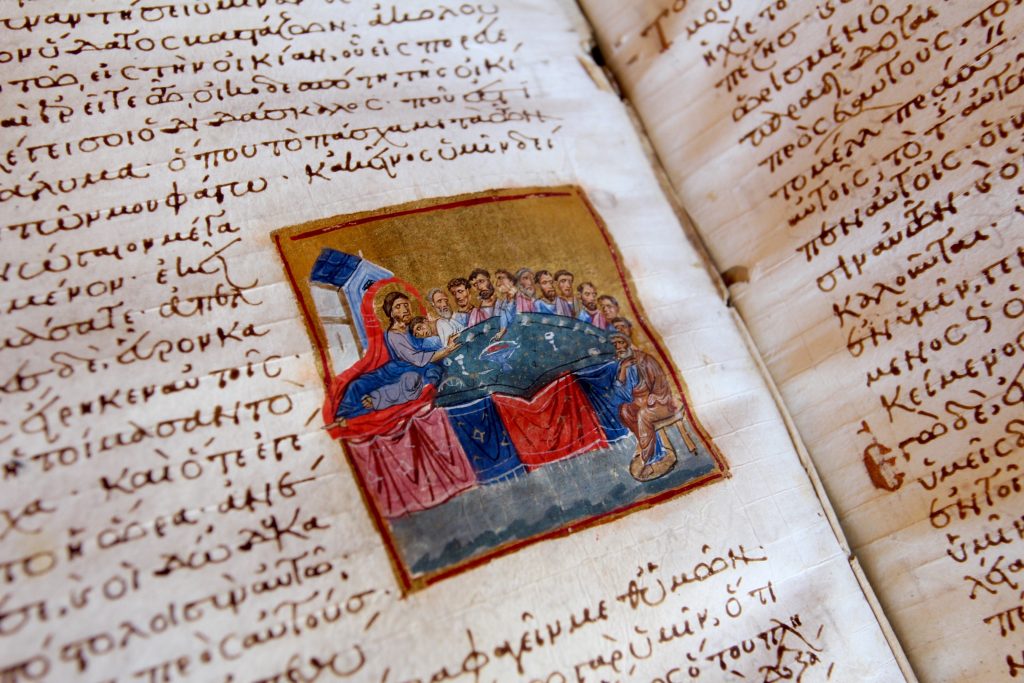
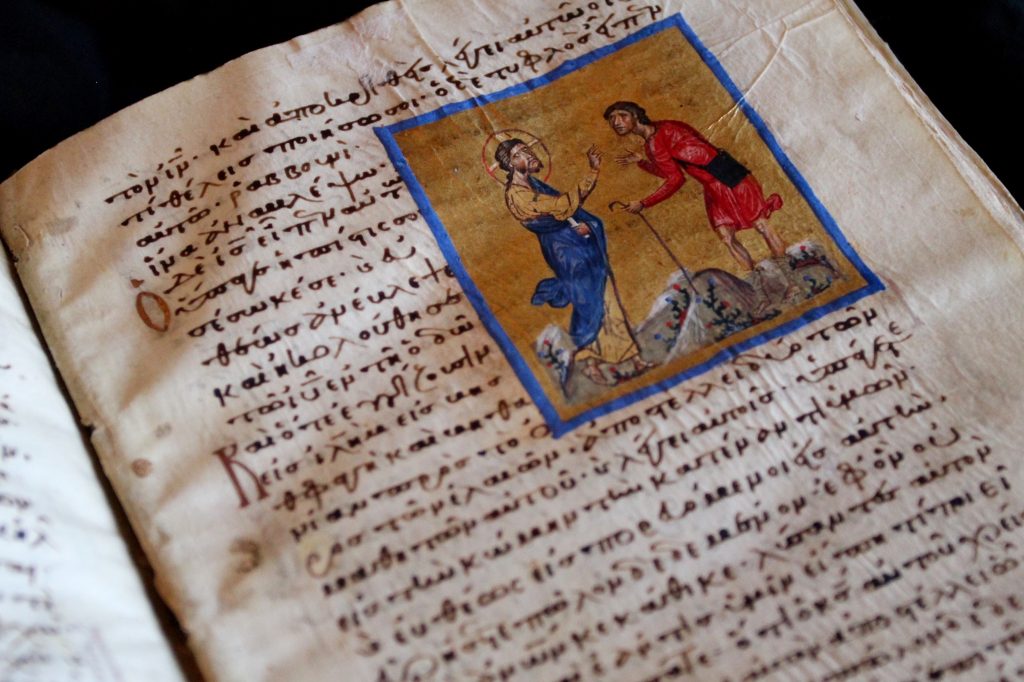
MANUSCRIPTS 101
Materials and Handwriting
As expressed under GA above, both the materials used to make the manuscript and the handwriting used in it aid in its categorization. The qualities also reveal important details about the manuscript’s age and production.
Papyrus
Papyrus is an ancient writing surface made of the papyrus plant. The earliest extant copies of the New Testament were written on this material.
Majuscule Handwriting
Scribes used a majuscule handwriting from the 4th century B.C.E. until about the 9th century C.E, though we find the usage of this script continuing beyond the 9th century in some liturgical texts. The style changed throughout but remained in this form, which is somewhat equivalent to capital letters.
Minuscule Handwriting
A more compact and efficient form of writing, minuscule handwriting developed after majuscule handwriting,. Over the course of its use, minuscule handwriting morphed to different forms, and many ligatures developed within it. Most students require much time and practice to achieve proficiency in reading minuscule handwriting.
Parchment
Parchment, a common writing surface from the 5th to 14th centuries, was made of animal skin. Craftsmen took the hides of animals, cleaned them, and stretched them thin to produce large sheets. The sheets were folded into quires, often grouped with other folded quires, and bound into a codex, an antique version of a book very similar to those we carry around.
Paper
Both parchment and paper were available for manuscript production in the medieval period. The widespread opinion held that parchment was the more durable of the two materials. Paper therefore appeared less commonly until the advent of the printing press. Once paper production increased, the material was more frequently selected.
MANUSCRIPT CONTENT
In the digital manuscript library, each manuscript entry has been tagged according to the larger category that its contents fall into.
Those categories are:
Gospels: Matthew, Mark, Luke, and John
Pauline: Romans, 1–2 Corinthians, Galatians, Ephesians, Philippians, Colossians, 1–2 Thessalonians, 1–2 Timothy, Titus, Philemon, and Hebrews
Acts and Catholic Epistles: Acts, James, 1–2 Peter, 1–3 John, and Jude
Acts and Catholic Epistles: Acts, James, 1–2 Peter, 1–3 John, and Jude
Apocalypse/Revelation
Most Greek New Testament manuscripts only contain portions of the New Testament. Frequently the extant copies contain a collection, one book, or only a portion of a book.
MANUSCRIPT CONTENT
Lectionaries contain New Testament text in a special arrangement. They sometimes include other readings according to the calendar of lections. Their contents can be described by the New Testament text included or by the calendar days for which reading is included.
Those calendar day designations, often indicated in literature by a lowercase letter, are:
Weekday readings: (e)
Saturday readings: (sk)
Weekday readings from Easter to Pentecost, Saturday/Sunday reading for other weeks: (esk)
Selected days only: (sel)
Psalms with Biblical odes: (PsO)
Liturgical book containing an assortment of NT texts (Lit)

MANUSCRIPT FEATURES
The New Testament manuscripts contain more than just copied text. Readers aids, ornamentations, notes, and more are transmitted along with the Scriptures. Select the filters on the left of the library main page to find manuscripts containing those you wish to see.
Canon Tables
These are usually located near the beginning of a manuscript and come in two forms. They can be plain, having only a list of the reference numbers for the various pericopae, or sections of scripture, or they can be ornamented and colorful. In both cases, the reference numbers are written with the Greek number system and not Arabic numerals. For more about canon tables, read From the Library: Eusebian Canons in Greek New Testament Manuscripts.
Colophon
This consists of a final scribal note indicating important information about where or when the manuscript was transcribed. It might also include who wrote it and some form of blessing.
Commentary
Some manuscripts have commentary on the text that is either interlinear or in the margins. Scribes sometimes distinguish the biblical text from the commentary by employing a different color of ink for each portion. Other times, the commentary wraps around the text which stands in the middle of the page.
Cruciform
The text forms the shape of a cross on the page.
Ekthesis or Ornamented Letter
A feature common to New Testament manuscript. The scribe draws an oversized letter to indicate the beginning of a new section of text. These letters can simply be oversized and offset or they can be beautifully illustrated. For more about ekthesis and ornamented letters read From the Library: Decorated Letters in Greek New Testament Manuscripts
Headpieces
These are drawings inserted between sections of text, indicating a change in section. Headpieces often involved color and ornate patterns.
Icon
Icons are illustrations included in the manuscript. Among icons, readers most commonly find author portraits, marking the beginning of the Gospel book associated with them. Others include biblical figures, narrative scenes from the accompanying Scripture, saints honored historically in churches, and even those who commissioned a manuscript’s production.
Inscriptio
This is a title for the section. It is normally written in different color ink and a more stylized hand. Often, the title is abbreviated in some way.
Introduction/Hypothesis
In the transmission of the text, traditional introductions to each New Testament book made their way into the manuscripts. As we would expect, these appear before the book they introduce when scribes include them.
Kephalaia
The New Testament pericopae received chapter titles of a sort. Kephalaia are somewhat similar to the headings found in many English headings to describe the section that follows. Typically, they are present in list form prior to each book. They normally begin with the preposition περί.
Lectionary Guide
Similar to kephalaia, these list the lections from a particular book and pertinent information concerning them. They can be found in any manuscript, not just lectionaries, and are sometimes placed at the end of the codex.
Marginal Notes
Sometimes scribes or those who used manuscripts made notes in the margin, separate from the commentary. This is normally a block of text written in a hand distinct from the rest of the text.
Obelisks/Dots/Other Scribal Notes
These terms refer to any symbols that a scribe might have made in the margin. They differ from marginal notes in that they constitute one to two words or a symbol. They serve as readers’ aids, indications of other glosses for words, or potential other readings of the verse from other manuscripts.
Stichometry
Found at the end of a New Testament book, stichoi refer to the number of lines a scribe copied and was used to determine the scribe’s pay. The word is normally abbreviated after a subscriptio and precedes a Greek numeral.
